The giant panda bear (Ailuropoda melanoleuca) is native to the mountains of central China.
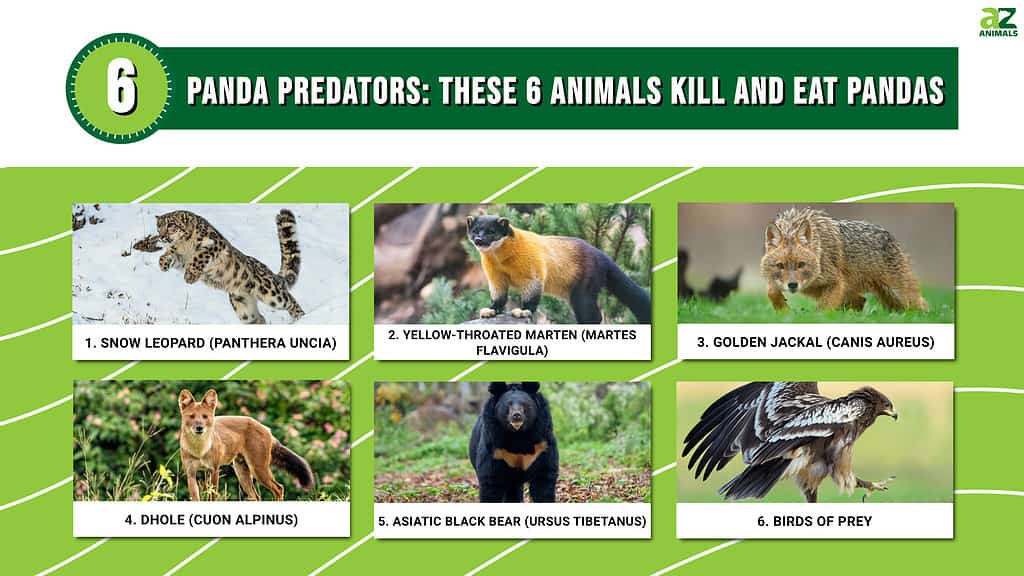
In the past, pandas were not believed to be bears, but rather members of the Procyonidae family, the same as raccoons. That changed in the 1980s when DNA testing revealed that pandas are members of the Ursidae (bear) family.
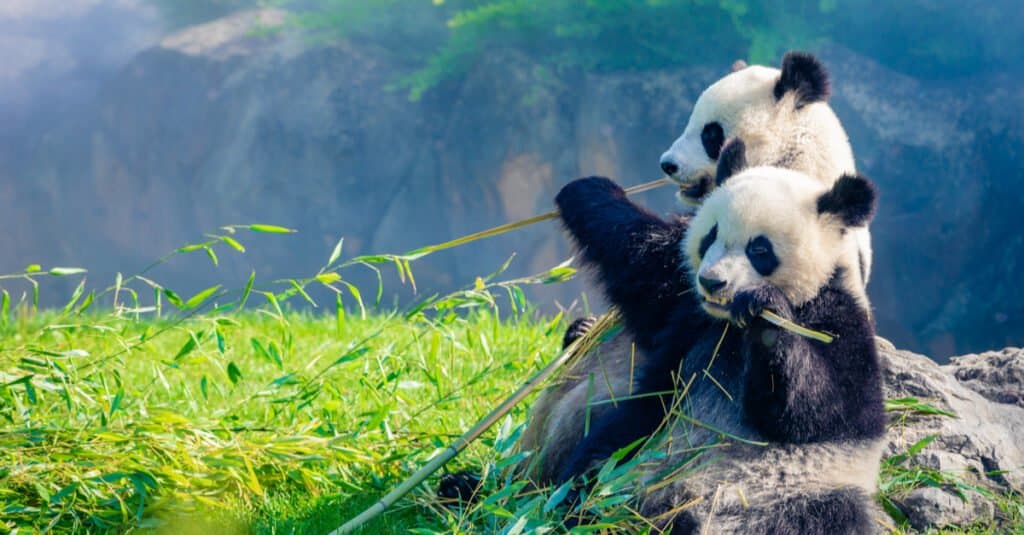
Giant pandas spend their lives eating bamboo in China’s mountain regions.
©Daniel X D/Shutterstock.com
A Unique Bear
The panda is unique among the bears. It does not hibernate. Panda cubs are extremely small and underdeveloped at birth.
The panda’s diet is almost exclusively made up of plants, with bamboo accounting for nearly 99% of the bear’s sustenance. On rare occasions, the giant panda may occasionally help itself to crops such as wheat, pumpkins, kidney beans, and livestock feed.
The panda is not technically an herbivore, though. It is an omnivore, like all other bears. Giant pandas will eat protein, albeit very rarely. Pandas have been known to eat pika, rodents, insects, and even carrion.

Panda cubs are adorable but also vulnerable.
©Hung Chung Chih/Shutterstock.com
Mature Great Pandas
Pandas appear cute and cuddly. The internet is filled with videos of pandas playing, tumbling head-over-heels, and displaying what could be described as lovable clumsiness.
It’s hard to envision a giant panda acting fierce, but it is a true bear. Like all bears, it can and will defend itself. A mature panda can weigh up to 200-300 pounds. It can run up to 20 miles per hour. Its claws and teeth can be lethal. Powerful jaw muscles are required to chew through the tough, fibrous bamboo plants that make up nearly all of the panda’s diet. In fact, pandas have a bite force that ranks close to hippopotamuses, polar bears, tigers, brown bears, and lions.
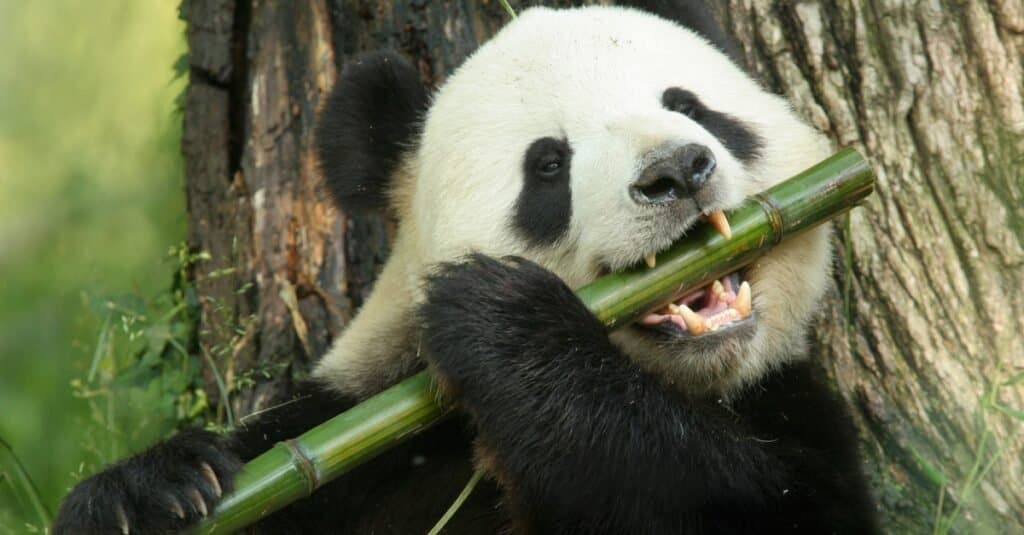
Giant pandas must have tremendous bite force to eat the bamboo that makes up almost all of their diet.
©Bryan Faust/Shutterstock.com
Panda Cubs
Mature giant pandas are largely peaceful animals, but they are certainly capable if they have to defend themselves. Panda cubs, on the other hand, are utterly defenseless.
Like most bears, a fully-grown panda has no natural predators. But there are several animals that will make a meal of panda cubs if the opportunity arises.
Panda cubs are severely underdeveloped when they are born. Cubs can be as small as six inches long and weigh a mere 3.5 ounces at birth. That is approximately 1/900 of the mother panda’s weight.
The cubs are blind, hairless, and utterly helpless. Cubs don’t even begin to crawl until around three months of age and will ride on their mother’s back until they are around six months old. Panda cubs aren’t weaned until they are about one year old.
These cubs are completely defenseless on their own for the first year of their lives. Panda mothers must be vigilant in defending their young. There are natural predators in the panda’s habitat that will not hesitate to prey on a great panda cub.

Panda cubs are completely defenseless in their first year of life.
©armminivet/Shutterstock.com
What Eats Pandas?
1. Snow Leopard (Panthera uncia)
The snow leopard hunts the mountainous regions where the panda resides. Interestingly, the snow leopard is not actually a leopard. Genetically speaking, it is more closely related to tigers.
The snow leopard’s range spans 12 countries and covers more than 770,000 square miles, but 60% of its native habitat lies within China.
This cat is well suited to hunt in China’s harsh mountain environment. Its remarkably thick fur protects it from the cold. The snow leopard’s huge paws act as snowshoes. Its coat is ice-colored with black rosettes, providing amazing camouflage.
The snow leopard’s preferred prey is the blue sheep. It will also prey on Argali wild sheep, pikas, marmots, ibex, and hares.
But, like most big cats, the snow leopard will take whatever prey is available. So while panda cubs aren’t at the top of the snow leopard’s regular menu, the cat will not pass up an easy meal.

Snow Leopards are perfectly designed to hunt in the harsh environment of China’s mountains.
©Chris Desborough/Shutterstock.com
2. Yellow-Throated Marten (Martes flavigula)
The yellow-throated marten occupies a wide range in Asia. Also known as the kharza and chuthraul, the yellow-throated marten is the largest of all the martens, with mature individuals weighing around ten pounds.
This marten can be fierce, so it is not often preyed upon, even by significantly larger predators. Yellow-throated martens are omnivores that will eat fruit and nectar but will also prey on animals significantly larger than themselves. This ten-pound predator will prey on rats, hares, snakes, lizards, pheasants, and even small deer. Given the opportunity, the yellow-throated marten will also snatch a panda cub.
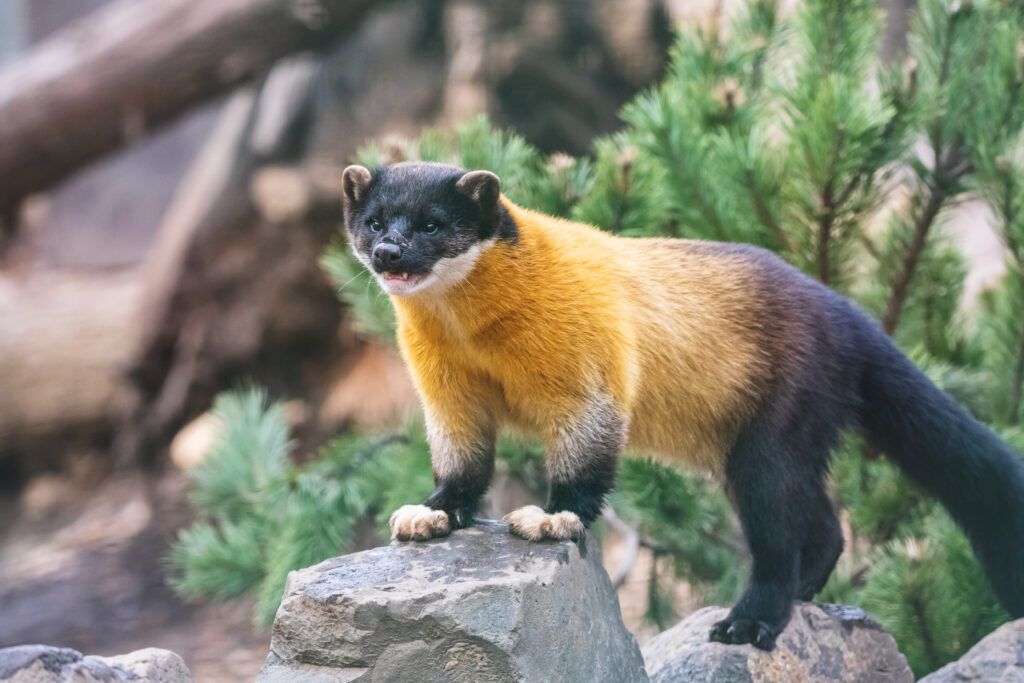
The yellow-throated marten is so fierce that many larger predators won’t tangle with it.
©iStock.com/Natalia Bubochkina
3. Golden Jackal (Canis aureus)
Since a golden jackal is outweighed by a mature giant panda by at least ten times, the odds of a jackal preying on an adult panda are virtually zero. This predator will, however, snatch a panda cub if there is an opportunity. While the panda is far larger than the golden jackal, the jackal can win a footrace with relative ease. The panda can run up to 20 miles per hour, while the jackal can reach speeds of up to 40 miles per hour in short bursts. If a jackal does manage to grab a panda cub, the panda mother has little chance of chasing it down.
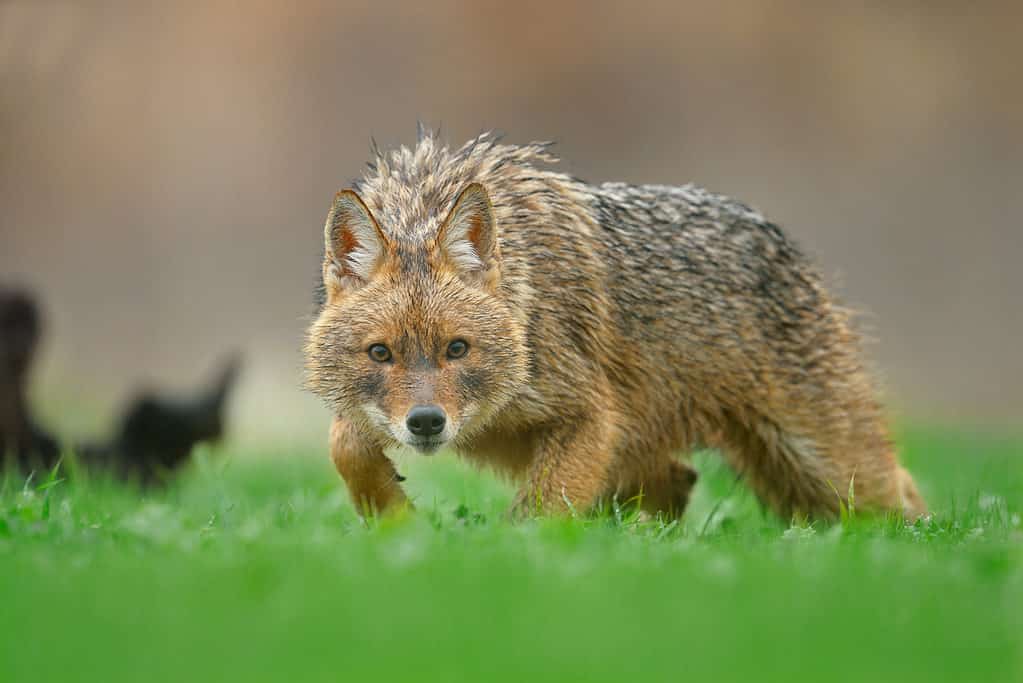
A golden jackal can easily outrun a giant panda.
©Vladimir Kogan Michael/Shutterstock.com
4. Dhole (Cuon alpinus)
Dholes, also known as Asiatic wild dogs, once had a range that covered almost half of the world. They are now highly endangered. It’s estimated that as few as 2,000 dholes may be left in the wild.
These wild dogs hunt in packs of up to 12 and have been known to attack large carnivores, such as leopards. This is mainly due to competition among the carnivores for prey animals in an area rather than dholes actively preying on leopards themselves.
A pack of dholes could potentially bring down a mature giant panda bear, although there seems to be no documented evidence of this event. There would also be little reason to do so since giant pandas don’t represent predator competition to dholes.
These wild dogs will, however, poach panda cubs as a meal. Dholes can reach speeds of 45 miles per hour, so this would be another case where, if a panda cub was taken, its mother would have virtually no chance of rescuing it.
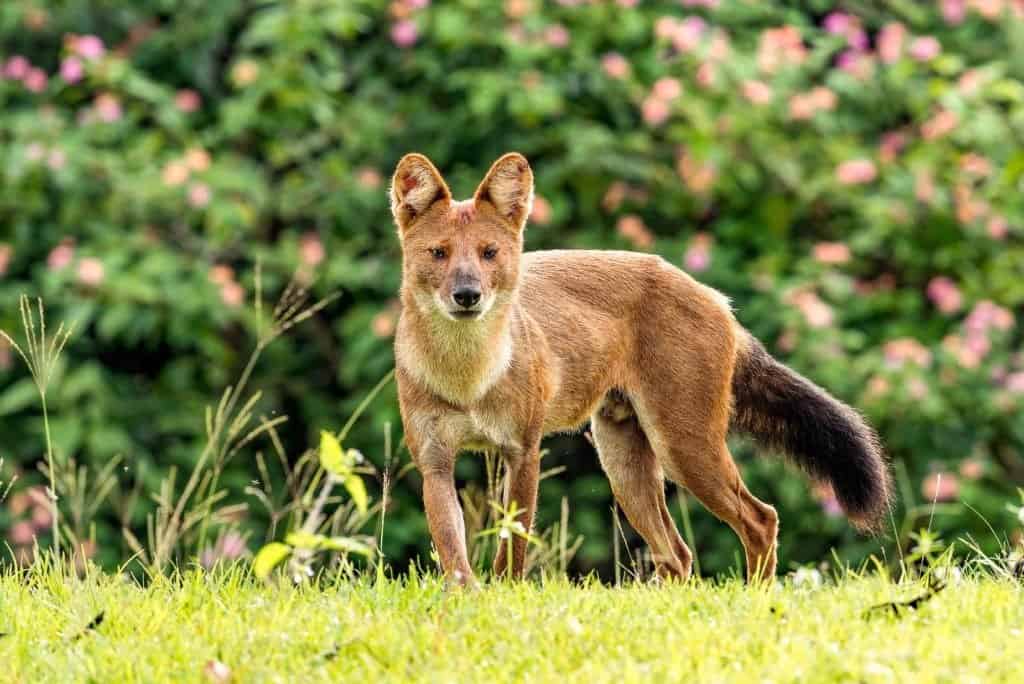
Dholes are wild dogs that will not hesitate to snatch a panda cub.
©Nimit Virdi/Shutterstock.com
5. Asiatic black bear (Ursus tibetanus)
The Asiatic black bear (also known as the Asian black bear) eats a diet consisting mostly of cherries, bamboo shoots, leaves, grasses, and herbs. However, it is an omnivore like all bears. This bear won’t turn down occasional protein, though it often comes through insects such as termites.
Occasionally the Asiatic black bear will prey on birds and rodents. And, while it is rare, there have been cases of the bear preying on panda cubs.
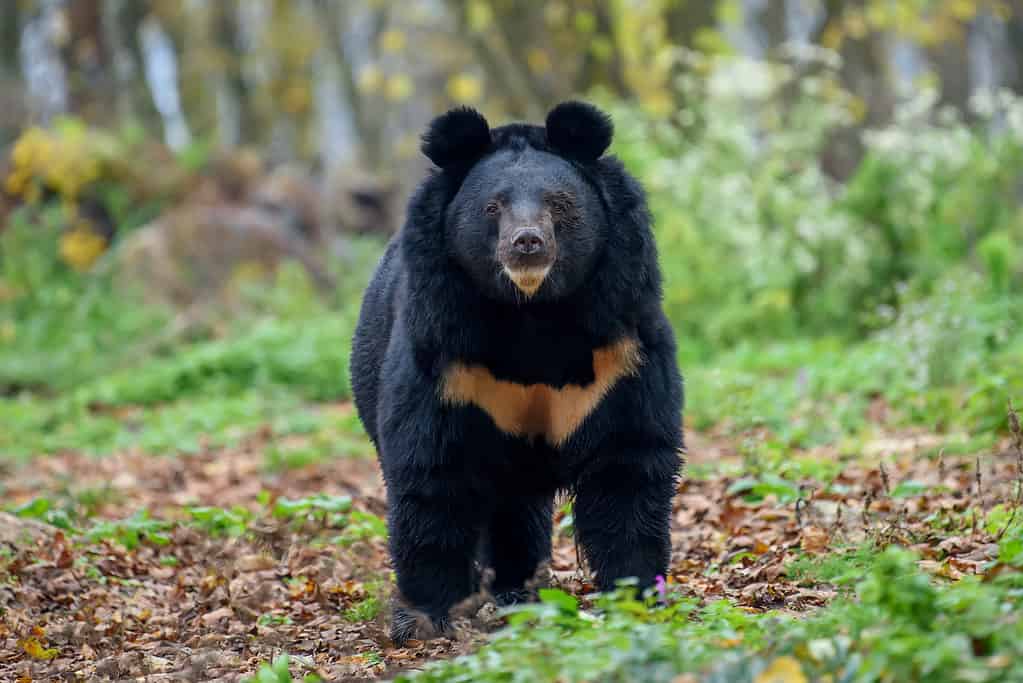
The Asiatic black bear is mainly herbivorous but will not pass up occasional protein.
©Volodymyr Burdiak/Shutterstock.com
6. Birds of Prey
The danger for panda cubs isn’t just found on the ground. It can also come from the skies. Multiple species of predatory birds fly over the giant panda’s habitat, such as the greater spotted eagle (Clanga clanga).
Raptors, such as the greater spotted eagle, are proficient and lethal predators. They often prey on fish, amphibians, reptiles, other birds, and small mammals. The greater spotted eagle is not a picky eater and will even dine on carrion if afforded the opportunity.
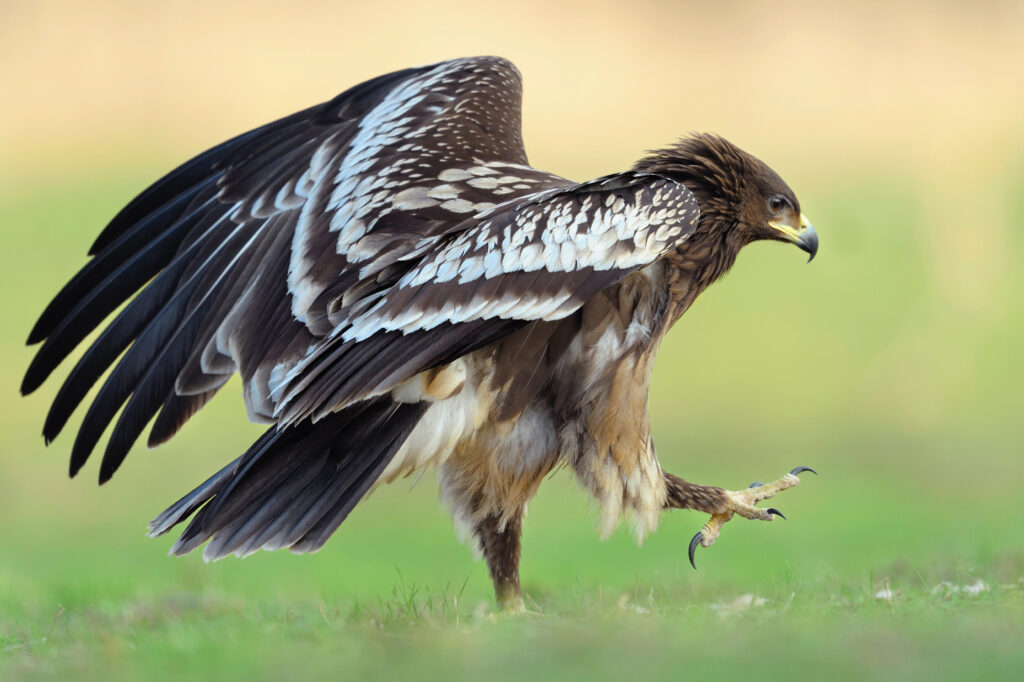
It doesn’t happen often, but a greater spotted eagle can grab an unsuspecting panda cub.
©Vladimir Kogan Michael/Shutterstock.com
Panda cubs are not a primary food source for China’s predatory birds, but a mother giant panda would do well to keep her eyes on the skies. If a bird, such as the greater spotted eagle, sees an opportunity to snag a cub, it will likely not pass it up.

Mother giant panda bears must keep a close watch on their vulnerable cubs.
©iStock.com/Hung Chung Chih
The photo featured at the top of this post is © Chen Wu from Shanghai, China / CC BY 2.0 – License / Original
Thank you for reading! Have some feedback for us? Contact the AZ Animals editorial team.






